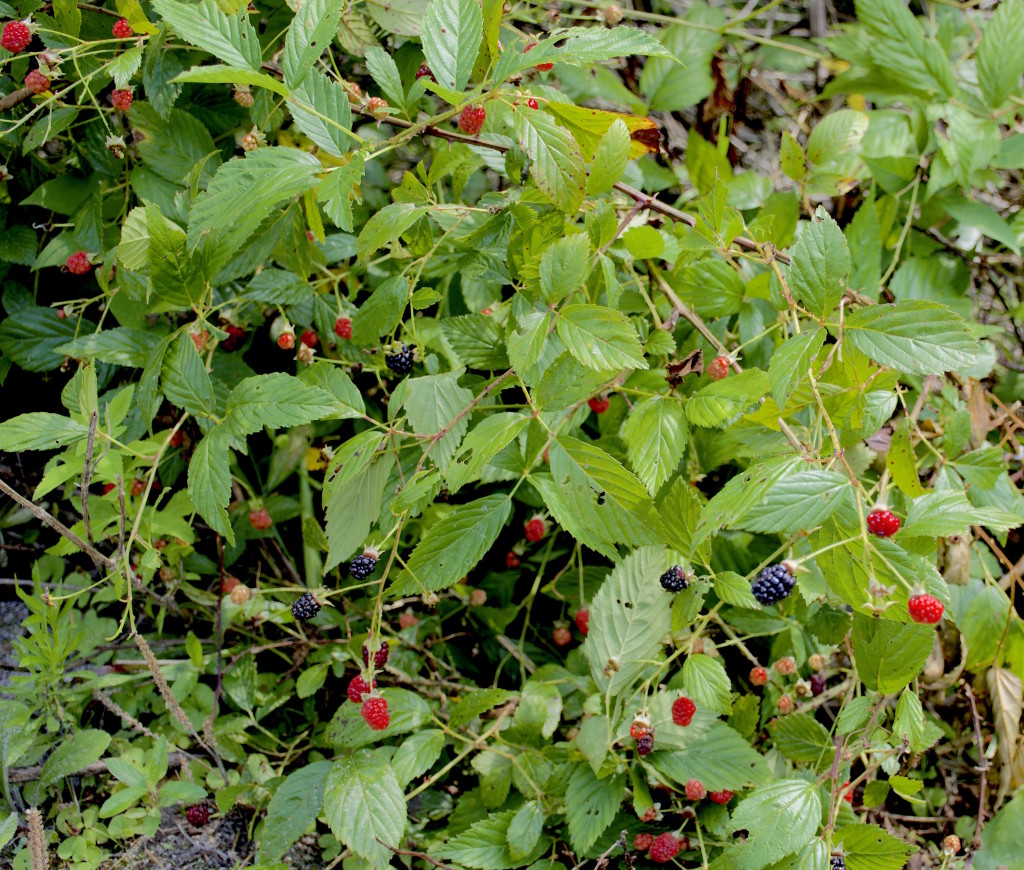
Wild Blackberries are in season locally and worth looking out for. The same field that produced the Betony roots below was also full of sweet wild blackberries. Photo by Green Deane.
A video on how to ferment Stachys floridana roots (nearly any root or vegetable for that matter) is in the making and will be uploaded soon. Of more immediate interest to many readers of this newsletter is the size of the roots, about twice or thrice that of usual. As with the mantra in real estate, it is the result of location, location, location.
Many folks find Betony roots at the transition zone between grass and forests. That’s where a lot of wild food is found including animals. They know there’s food there as well. Transition zones are kind of like nature’s grocery shelves. Betony roots are also found in lawns and in fact we spend millions of dollars every year trying to get rid of them. What those two locations have in common is thick soil and or roots. Lawns usually have good soil, loam with a lot of grass roots. And transition zones often have a lot of roots from the various plants competing to be there. The Betony roots picture right came from a dry, scrubby field with a lot of wire grass, brambles and short bushes. In a word, weedy, not lawn and not forests. But more importantly the thatch was only about 1.5 to 2 inches thick and underneath soft fine sand. This location consistently produces four to six-inch tubers. From the Betony’s point of view it is soft ground, thin thatching to get through and because of the sparse vegetation less competition for water and nutrients (all of which will be mentioned in the upcoming video.) To read more about the Florida betony, go here. And don’t forget there are Stachys around the world and many of them have edible parts so there is probably one near you.
The infamous Lothario Casanova said said he had no special attributes that contributed to his success except one: He had a knack of knowing who to approach. In foraging much success is in knowing where to look. Oh, and to read more about the blackberries above, go here. For its relative Dewberries, here. If you prefer a third member of the clan, Raspberries, their article is here.
Still intensely in blossom are Elderberries. While in theory they fruit all year locally they do favor the spring time and now is the time to gather them in quantities for food and medicine. Elderberries have a long history of use: The ripe berries are made into medicine, pies, wine, and muffins. The flowers are used to make fritters and flavor a quick champagne or for tea. There is even one report of the shoots being boiled and eaten. I’m not sure about that because all parts of the shrub are toxic except for the blossoms and ripe berries. That said I have heard of one other use: Making the unripe berries into faux capers. The green fruit is put into a 5% salt solution and left to ferment for three weeks. Then the fermented berries are stored for several week in your choice of vinegar. Supposedly the processing makes the berries non-poisonous. I don’t know. It could also be that so few are consumed as “capers” that not enough toxins are consumed to notice. I do not know. I’ll put it on my list of things to do. To read more about elderberries go here. We also have had some posts about it and the deadly Water Hemlock on the Green Deane Forum and how they resemble each other.
Another group of plants that are here all year but favor the spring time are Smilax. You can harvest the tips by the fistful now. Some will be wispy others as thick as asparagus. A mantra I tell my students to memorize is “short stem, two tendrils, one leaf then flip sides. short stem, two tendrils, one leaf.” While it is not difficult to recognize a Smilax the individual species can be a bit elusive. And while there are not true look-alikes the distribution of leaves and tendrils does confuse a few folks. “One stem, two tendrils, one leaf then flip sides. Short stem, two tendrils, one leaf.” There are many who consider the growing tip of the Smilax to be the prime edible of spring. Extremely ripe berries are edible but not great. It’s roots are even less interesting. You can read about them here. And while it is said all Smilax I would not eat the red berries of the S. walterii, just out of form. I have only seen it twice and I’d like to know for certain the red berries are edible before I tried them. There is a red-berries Smilax on Crete that is edible but it is a different species.
Less dependent on monthly seasons are Juniper Berries, which are really cones not berries. Juniper trees, called the Eastern Red Cedar and the Southern Cedar, are more independent that other plants. They decide on their own when they will produce “berries.” A year ago December I think nearly every juniper on Amelia Island was producing berries. A year later nearly none. There is little rhyme or reason to the juniper trees near where I live. One up the street is fruiting, one down the street is not and the “berries” can take up to 18 months to turn from light green/blue to dark blue/black. They have a variety of uses, from the kitchen to the sick room. To read about Juniper “berries” go here.
Upcoming foraging classes:
Saturday, May 2nd, George LeStrange Preserve, 4911 Ralls Road, Fort Pierce, FL, 34981. 9 a.m.
Sunday, May 3rd, Mead Garden, 1500 S. Denning Dr., Winter Park, FL 32789. 9 a.m.
Saturday, May 9th, Boulware Springs Park, 3420 SE 15th St., Gainesville, FL. 32641. 9 a.m.
Sunday, May 10th, Jervey Gantt Recreation Complex, 2390 SE 36th Ave., Ocala, FL, 34471. 9 a.m.
To learn more about the foraging classes go here.
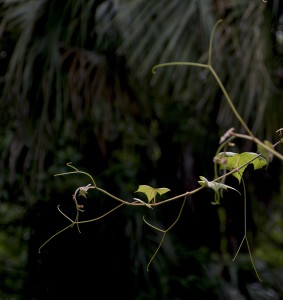
No this is not another picture of a Smilax tip. It’s a wild grape, see the forked tendril? Photo by Green Deane
Need to identify a root? Looking for a foraging reference? Maybe you have a UFO, an Unidentified Flowering Object, you want identified. On the Green Deane Forum we chat about foraging all year long. And it’s not just about warm-weather plants or just North American flora. Many nations share common weeds so there’s a lot to talk about. There’s also more than weeds. The reference section has information for foraging around the world. There are articles on food preservation, and forgotten skills from making bows to fermenting food. Recent topics include: New Book: Southeast Foraging. Hibiscus Help. Native Wormwoods. Ancient DNA. Love Me Some Betony. Passiflora edulis. Top Restaurant Serves Deer Moss, Uvularia sessilifolia? Where Have You Found Currants? Purple flowering plant ID, Bee Swarms, To Cook is Human, Can I get Some Suggestions, Making Butter, Heliculture, Tincture? What Kind of Weeds? Sassafras, and Cherry Bark Tea. You can join the forum by clicking on the button on the upper right hand side of this page.
What Do You See #24? After a few recent difficult WDYS’s this week is easy. There are three definitely edible wild species in the photo. What are they?

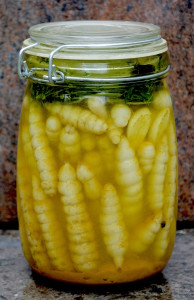
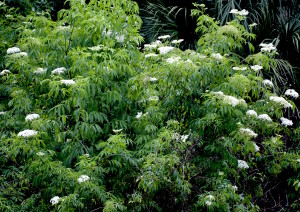
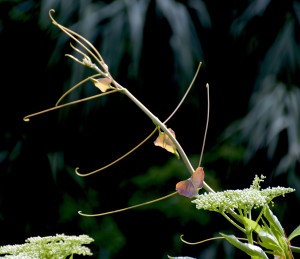
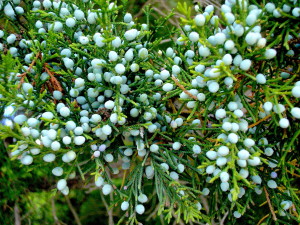
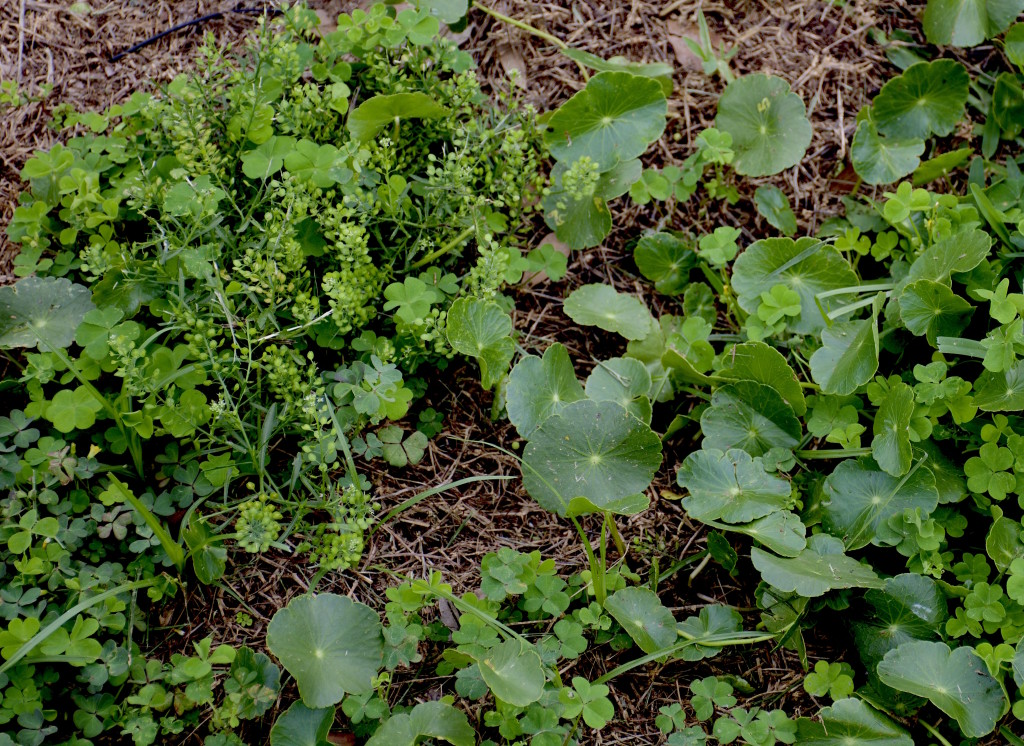

Poor mans pepper, hydrocodyle(dollar weed), oxyalis or wood sorrel
Thanks for your wonderful knowledgeable website!!
Hydrocotyle sp. (pennywort, dollarweed)
Lepidium virginicum (poorman’s pepper)
Oxalis corniculata (common yellow woodsorrel)
Peppergrass (one of my favorites), Oxalis (aka. wood sorrel, sorrel), and Pennywort (aka. Dollarweed) Thanks again G. Deane. Am I right?
Gone Berry Pickin’!
Don’t ya just love this game? I really enjoy trying to see the edibles in the picture; it tests my ability to recognize assorted plants
Indeed transition zones are “kind of natural grocery shelves”. Having read this together with the info. on” Betony coming from a dry scrubby field with….from the Betony’s point of view it is soft ground”, I immediately felt the suffering of the African and Asians immigrants on our side of this Mother Nature to Europe . Instead of settling in soft ground like Betony their peaceful resort is the saline water of The Mediterranean Sea.
Believe it or not I’ve indulged deeply on making a fortune out of the edible roots of Stachys floridana particularly on watching the image of making Betony pickles plus the implication from the fancy Paris restaurants. I said to myself go and look for the roots of Basil plant I’m growing in my garden ,since Ocimum basilicum a cultivar grown for strong clove scent is related to Stachys officianilis both belonging to the same family Lamiaceae. Moreover, the image I saw for the plant Stachys palustris (also of the same family Lamiaceae ) was almost similar to mine except for slight differences including, may be, shape of leaf, prompted to continue pursue my purpose. However, looking carefully at the root and rootlets, even with magnification, I could not satisfy my eye sight of what I had seen as clear grub-like pickles of Betony in the image you’ve given. Unfortunately till now my intensive search to find the exact species in my country ended with no avail. I wish I’ve a coat to sell and buy Betony. Surely I’m not giving up as long as we’re contributing to Mother Nature.
What is the difference between dollar weed, nasturtium and gota kola?
Dollar Weed is round, smooth, no hair, the stem is in the middle. It tastes like carrot tops. It is a wild plant. Nasturtium are a cultivated crop mostly, they are round, stem is in the middle, they are very peppery. Goto Kola is spade shaped, has rounded teeth, stem attaches to the side, slightly hairy, bitter tasting.